Prototyping an agent is a piece of cake. But operating it? That could be a bit of a hassle.
It takes more than a tangle of scripts, brittle LangChain chains, and a notebook full of “why did it break this time?”.
Simply put: duct tape doesn’t scale.
As a developer, you’ve probably realized agent orchestration is its own engineering problem. When workflows span tools and teams, you need traces, roles, and a runtime that survives production traffic.
That’s why the next wave in AI is about a proper operating system for agents. Enter SmythOS, an open-source project built to take agents from toy demos to production systems.
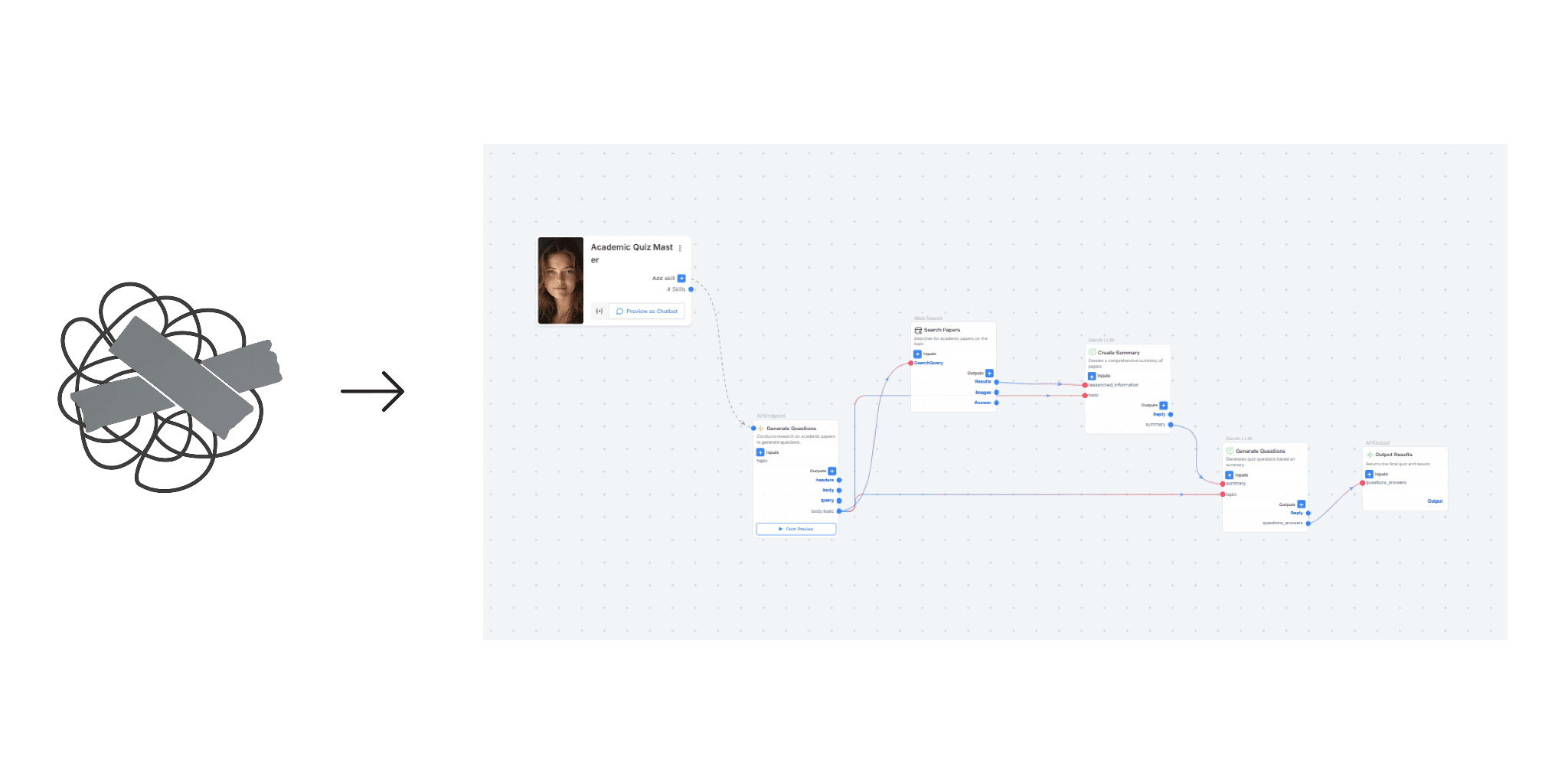
Why Agent Orchestration Matters Now
LangChain and similar libraries make experimentation easy; production is different. Logs alone won’t explain a drift. You need traces to follow a request end-to-end and metrics to track latency, errors, and tokens. These three signals form the baseline for reliability.
Here’s what developers are running into without agent orchestration:
- Scaling up: A couple of agents on your laptop is fine. A production system serving thousands of users is not.
- Debugging: Logs only tell part of the story. Developers need full observability to see why an agent went off the rails.
- Deployment: Cloud, edge, and on-prem environments all demand different setups.
This is why orchestration has become the hot problem to solve, and it’s where SmythOS steps in.
What SmythOS Brings to the Table
SmythOS is an open-source operating system for AI agents. The core building blocks (the SmythOS Runtime Environment (SRE), SDK, and CLI) are MIT-licensed and available on GitHub.
It’s built to give developers the missing pieces needed to move from concept to production.
With SmythOS, you can:
- Orchestrate multi-agent systems that collaborate instead of collide
- Deploy to cloud, edge devices, or private infrastructure
- Build code-first with SRE + SDK + CLI; optionally use the visual builder for visual workflows (V.S. is interoperable but not fully OSS)
- Debug with observability and stateful memory built in
- Enforce security with fine-grained permissions with roles and policy checks that deny unsafe calls before execution.
Think of it as going from “maker projects with duct tape” to a solid foundation you can build real systems on.
Real-World Agent Orchestration with SmythOS: 6 Developer-Led Case Studies
The most practical way to understand SmythOS is to see it in action.
Across industries, developers are moving away from oversized, brittle agents and instead wiring together smaller, purpose-built ones.
Each agent handles a focused task. This possible because SmythOS provides the orchestration that makes them work together as a reliable system.
What follows are six examples that show how developers are building production-ready workflows with SmythOS today.
1. Customer Support → Faster Routing, Less Overhead
A support team handling a large daily volume of tickets set out to improve their response times without adding headcount or investing in a full-stack AI solution.
Instead, they deployed three lightweight agents in SmythOS:
- One agent filtered and cleaned incoming messages
- Another categorized them by topic and urgency
- A third routed tickets to the right support queue via webhook
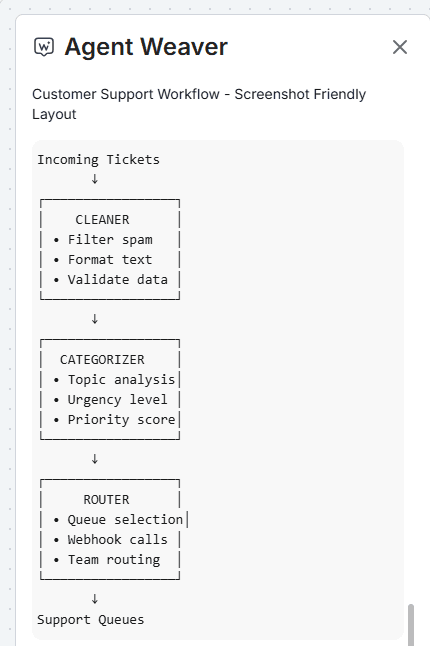
The setup was minimal, but the impact was undeniable. Response times dropped by nearly 50%, and agents could focus on resolution instead of sorting.
2. SEO Workflows → From Keyword to LinkedIn Post
In marketing workflows, developers are building full agent chains on SmythOS:
- One agent surfaces low-difficulty, high-intent keywords
- Another assembles SEO reports ready for clients
- A third repurposes longform posts into LinkedIn-ready updates
- A fourth monitors newsletters and flags viral content for curation
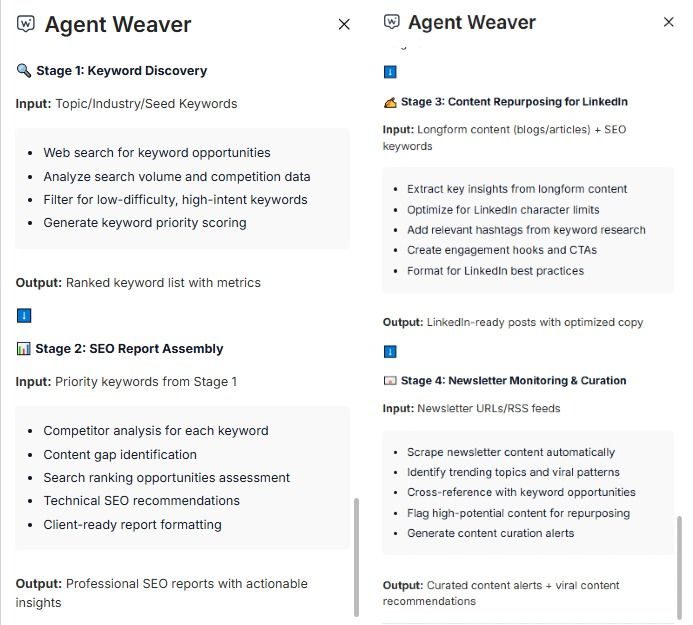
This lets teams stay ahead of trends and squeeze more ROI from their existing content, all without manual handoffs.
3. Creative Projects → Briefs Without the Back-and-Forth
In fast-paced organisations, delays often start before the work even begins. That’s what one creative agency was dealing with: scattered inputs, slow kickoffs, and unclear expectations.
Their solution combined SmythOS agents across two pain points:
- For internal ops, one agent passively logged desktop activity. Just app usage and timestamps, no screenshots or invasive tracking. A second summarized it into daily digests for coaching.
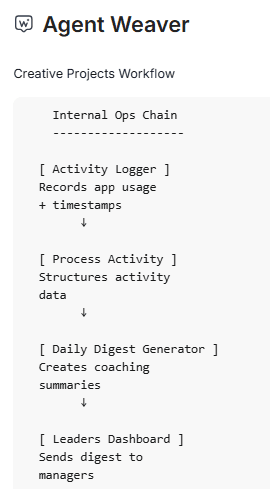
- On the creative side, one agent interviewed stakeholders via form, another generated a structured brief, and a third sent it to the team lead automatically.
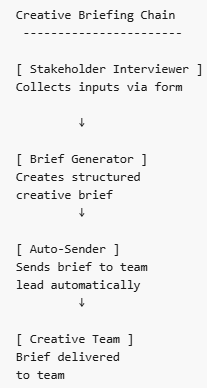
This cut back-and-forth by a mile. Project managers got the context they needed upfront. Leaders got visibility without micromanaging.
4. Publishing, Legal, and Field Ops: Accuracy, Voice, and Velocity
In regulated industries, workflows need to be fast and right.
At a digital publisher working with lectionary content, developers built a set of agents to answer reader questions:
- One handled fast, context-specific retrieval
- A second adjusted tone and phrasing to match house style
- A third applied compliance filters before any response was sent
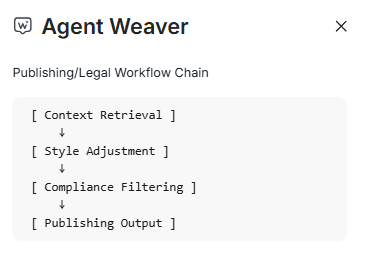
On the operational side, a construction firm took a similar modular approach:
- One agent gathered closeout documents as jobs wrapped
- Another checked for completeness and signature requirements
- A final agent sent the package to the client and updated timelines in Procore
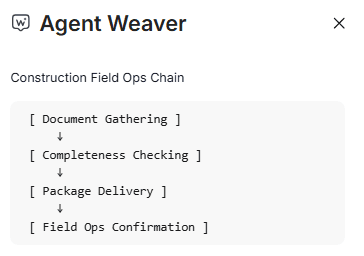
In both cases, the stack was simple, the work got done faster, and nothing slipped through the cracks.
Open Source First
Being open source means you can inspect the code, run it locally, and adapt it to your stack without any surprises or lock-in.
In this light, SmythOS is open source and available today on GitHub. Developers can fork it, extend it, or contribute back.
You’ll also find:
- Starter templates you can remix for your own projects
- A growing developer community on Discord
- A transparent codebase you can trust, audit, and deploy on your terms
Managing Access Across Spaces and Agents
Multi-agent systems get risky when tool calls credentials or private data. To solve this, SmythOS splits access control into Organization and Space layers. It also uses role-based permissions to decide who (or which agent) can see, change, or invoke what.

Developers may use built-in roles like Viewer, Editor, Admin, Super Admin, or create custom roles at the organization level for finer control.
These roles govern access across agents, spaces, and sensitive areas like billing, analytics, and settings.
How access is structured
On SmythOS, spaces are the working surface where agents, collaborators, and data live.
Inviting someone to an agent automatically adds them to the space that owns it, and you can manage member roles from Space Settings. Actions such as modifying Vault keys are permission-gated at the space level.
At the organization level, you set default roles for new members and define custom role profiles that apply across spaces.
Runtime enforcement: when an agent attempts a tool call, SmythOS checks the caller’s role/scope against the tool’s required permissions. If they don’t match, the call is blocked before the tool runs. The workflow continues, and the trace/logs show the blocked step, so the event is auditable.
How to Get Started
If you’re tired of duct-taping agents together and want something you can actually take to production, here’s how to jump in:
- Visit smythos.com and spin up a free account.
- Explore the open-source repo at github.com/SmythOS/sre.
- Join the Discord community to share ideas, ask questions, and collaborate.
Your AI agents don’t have to live in fragile prototypes. With SmythOS, you can build systems that scale, stay observable, and actually hold up in production.
This is a sponsored post provided by SmythOS. SmythOS is a platform designed to build, deploy, and manage intelligent AI agents at scale

